A comprehensive SEO strategy has many moving pieces, which makes it easy to get bogged down in the details and lose sight of the big picture. To help you manage the process of improving your search visibility, we’ve made a complete (and achievable!) website SEO checklist that anyone can follow — whether you’re just getting started with SEO or looking to boost your SEO knowledge.
What Is SEO Visibility?
SEO visibility, also known as search visibility or keyword visibility, is a key metric that estimates the percentage of clicks a website garners from its organic search engine rankings for target keywords. For example, if a keyword you rank for is searched 100 times and your site gets 5 clicks, your search visibility for that period is 5%.
Basically, search visibility reflects the breadth and impact of your organic keyword presence, depending on how high you rank for a set of relevant keywords (your target keywords). The higher your ranking for each keyword, the better your organic search visibility. Achieving maximum SEO visibility means ranking #1 for every target keyword in your set, while zero visibility indicates no rankings for any of your target keywords.
What’s the Difference Between Organic Search Visibility and Traffic?
Understanding the difference between organic search visibility and traffic is crucial for mastering SEO. While interrelated, these concepts represent distinct aspects of website performance within search engine results pages (SERPs).
SEO visibility is a relative metric derived from various search factors. It gauges how prominently a site appears across search results and estimates the likelihood of receiving traffic from a fixed set of target keywords based on the site’s rankings.
SEO traffic, on the other hand, is an absolute value. It represents the estimated number of visitors (clicks) your site will receive from organic search results. This estimate is based on your ranking for each keyword, the anticipated click-through rate (CTR) for that ranking, and the estimated monthly search volume for those keywords. (For more details on how to measure site traffic, check out our comprehensive guide here.)
Remember, search intent introduces a lot of variability in click-through rates, but broad averages can help us draw some insightful conclusions.
By distinguishing that SEO traffic measures click-throughs while visibility measures keyword positions, you can better understand the variations between these numbers and the insights they offer.
For example, changes in organic traffic aren’t always due to shifts in SEO visibility, but any change in visibility will invariably impact organic traffic. Understanding this relationship is a crucial step toward an effective SEO strategy.
How Is Search Visibility Calculated?
Not every SEO tool calculates search visibility the same way. That said, a common approach involves using a set of target keywords. Once you input or upload your keyword list, the tool analyses how your webpages rank for those specific keywords. Employing estimations of search impressions, the SEO tool generates a visibility score based on your ranking positions. Simply put, the higher your ranking for a target keyword, the greater the contribution to your overall visibility score.
How Do You Track Search Visibility?
If you want to answer the big question: “how is my SEO performance doing?”, tracking search visibility is primordial, but with so many tools offering unique metrics, it can be tricky to decide which one to use. Instead of spreading your SEO efforts thin across multiple platforms, it’s more effective to choose one reliable source and monitor its metrics consistently over time.
Here’s a breakdown of some top SEO visibility tools and how they each calculate their visibility metrics:
SEMrush Search Visibility
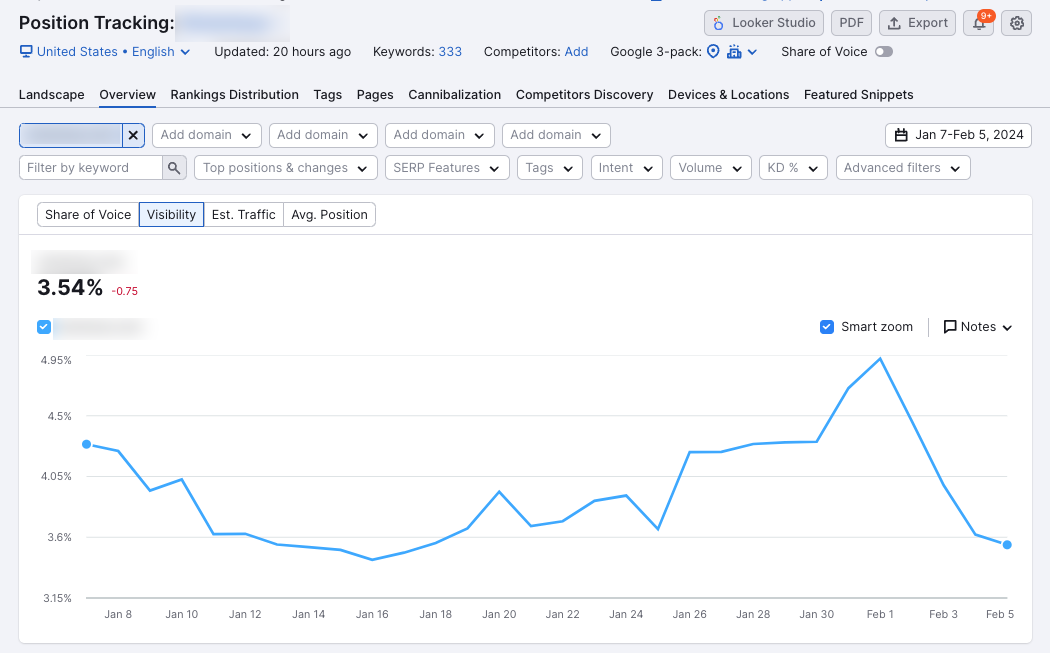
SEMrush’s Position Tracking Tool offers a dashboard to monitor your target keyword rankings. It measures search visibility and estimated traffic changes based on daily fluctuations in SERP positions, providing you with real-time insights.
Moz Search Visibility
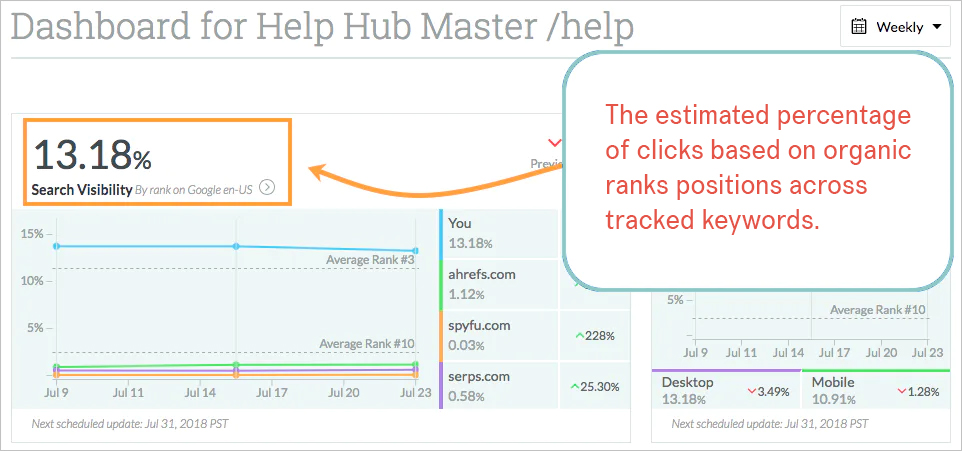
Moz Pro’s Search Visibility Score goes a step further by incorporating estimated click-through rates (CTR) for each target keyword based on your ranking position. Higher CTR keywords are weighted more significantly, resulting in an averaged metric that reflects the overall SEO visibility of your tracked keywords.
SEOmonitor Search Visibility
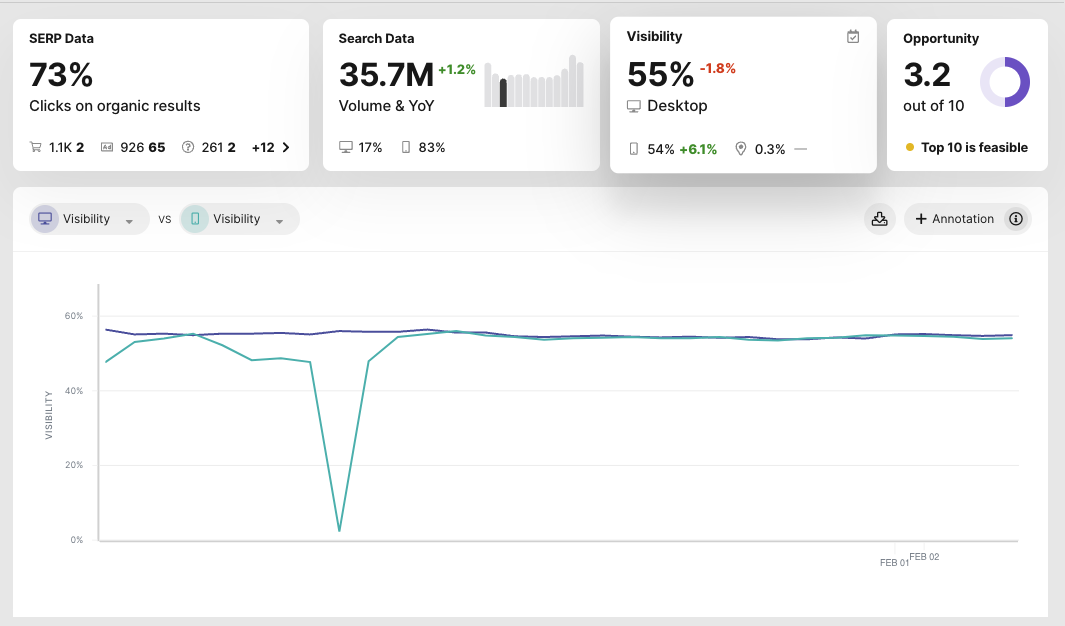
SEOmonitor estimates your SEO visibility by analysing current rankings to determine the percentage of searchers who see your page (impressions). This is then multiplied by the keyword’s monthly search volume, giving you an estimate of your share of impressions.
Ahrefs Share of Voice
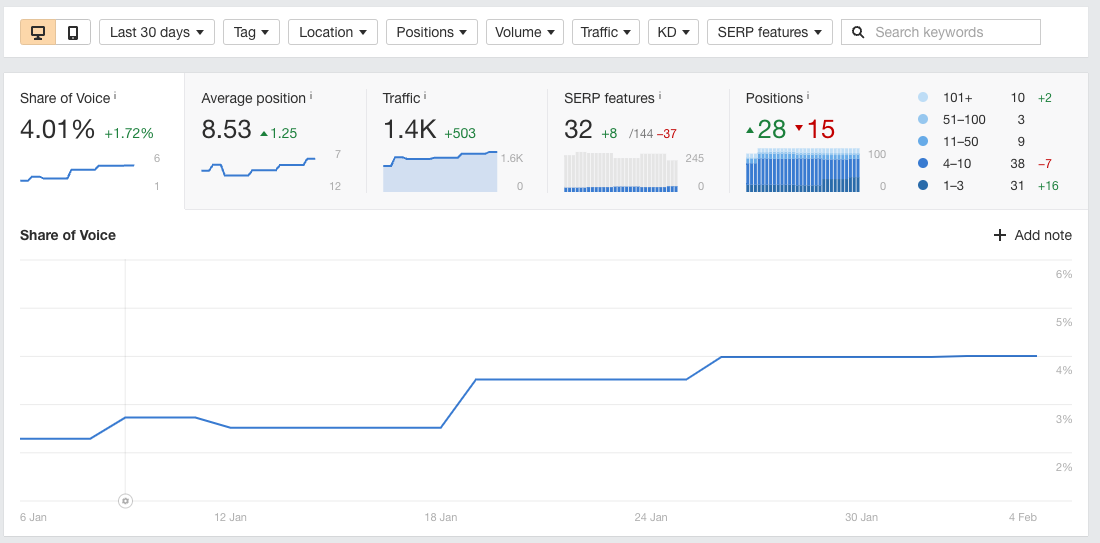
Ahrefs offers the “Share of Voice” metric, showing the percentage of all possible organic clicks from SERPs for your tracked keywords. This approach is similar to SEMrush, focusing on your visibility within the total pool of organic traffic.
At Hawk SEO, we track campaign performance through a combined analysis of keyword rankings. This holistic approach measures our success in improving rankings for target keywords, with aggregate keyword position movement serving as a proxy for increased organic search visibility for our clients’ target pages. Contact us to learn more.
Why Does Organic Search Visibility Matter?
Monitoring your site’s SEO visibility offers an overview of your SEO performance. If your goal is to enhance search visibility in Google search results, then organic search visibility metrics provide a clear snapshot of your site’s overall SEO health.
One of the key strengths of SEO visibility metrics lies in their ability to facilitate comparisons. Here’s how you can leverage them:
- Evaluate Page Rankings: By analysing the relative visibility of various pages on your website, you can gain valuable insights. This knowledge can help you prioritise which pages require updates or warrant more intensive optimisation efforts to improve their search ranking.
- Compare with Competitors: Measure your site’s visibility against your competitors. This comparison reveals how you rank for target keywords, identifies potential threats and opportunities, and showcases your progress in closing visibility gaps during your SEO campaign.
- Track SEO Impact: Use visibility charts to illustrate improvements over time, providing a clear “before & after” snapshot that highlights the effectiveness of your SEO efforts.
How Do SERP Rankings Relate to Search Visibility?
Achieving higher SERP rankings isn’t the ultimate objective of a robust SEO campaign. Instead, it’s the natural outcome of strategic SEO efforts aligned with your broader business goals.
Rather than zeroing in on individual keyword rankings, tracking the search visibility of groups of semantically related keywords (keyword themes) proves to be much more beneficial. This SEO approach shifts the focus from the performance of a single keyword to driving your business forward with traffic that converts.
What’s a “Good” Website Visibility Score?
To determine what a “good” Website Visibility Score is can feel subjective at times. While various SEO platforms offer proprietary metrics, there are 2 key principles you ought to keep in mind:
- 0% Score: This indicates your website isn’t ranking high enough for your target keywords to attract organic traffic.
- 100% Score: This signifies your website ranks at the very top of the first page for all your target keywords.
SERPs are on a constant change due to various algorithms and natural fluctuations. Therefore, achieving and maintaining a score above the mid-40s over an extended period is very rare. This holds especially true for non-branded keywords.
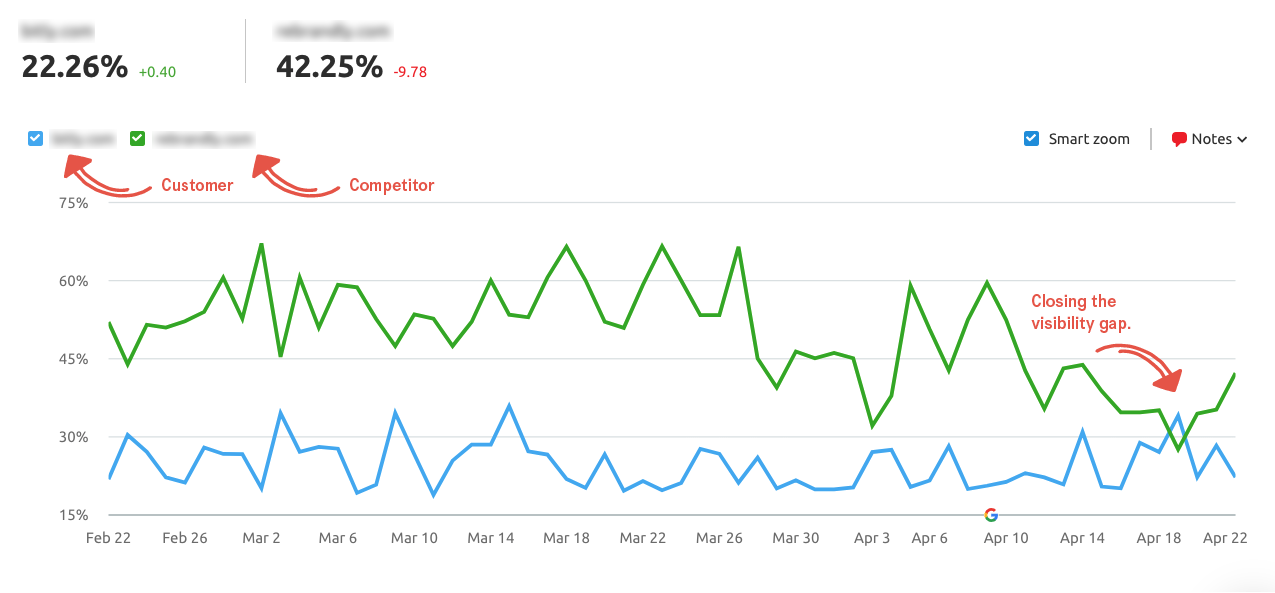
At Hawk SEO, we believe generic industry benchmarks can be overly broad and provide limited strategic value for crafting effective SEO campaigns. For this reason, we prioritise a more focused approach: directly comparing your website’s visibility against your key competitors. This method offers a clearer picture of your website’s standing within your specific industry and allows for the development of a more targeted strategy to outrank your rivals.
Why Measure SEO Visibility?
Whatever method you use to measure SEO visibility holds little weight compared to the core principle: search visibility directly impacts your ability to achieve your SEO goals.
Regardless of your specific goals, be it:
- Augmenting website traffic
- Enhancing brand recognition
- Fostering user engagement
- Increasing sales conversions
- Generating leads
A prominent presence in search results lays the groundwork for your overall SEO success.
5 Ways to Boost Your Website’s Search Visibility
As we’ve seen so far, ranking well on search results is what defines your SEO performance. Fortunately, there are several actions you can take to improve your website’s ranking and increase SEO visibility. Let’s explore five of them.
#1 Identify and Address Website Issues
An in-depth SEO site audit reveals hidden obstacles hindering potential customers from finding you. Our SEO agency identifies and prioritises improvements based on the effort required versus the potential impact on your search ranking. Address these issues to help your site achieve its full potential.
#2 Maintain a Clear Website Structure
Creating and submitting an XML sitemap via Google Search Console informs search engines of the pages on your website that should be crawled and indexed. You want your web content to be properly understood and included in search results. I can’t tell you how many site audits I’ve done that revealed absent, outdated, or malfunctioning sitemaps and that have prevented entire website sections from appearing in search engine results.
#3 Optimise for (Perhaps Even Prioritise) Mobile Search
Google now prioritises the mobile version of your website content for both indexing and ranking purposes. This shift reflects the growing dominance of mobile browsing habits. Content that is not optimised for mobile devices will be significantly disadvantaged in search results.
#4 Target Long-Tail Keywords
Long-tail keywords present a more targeted approach to improve organic search visibility. While competition for broad keywords like “snowboards” is fierce, there are likely fewer competitors vying for rankings associated with long-tail keywords such as “handmade snowboards shaped like surfboards.” By focusing on these less competitive phrases, you increase the likelihood of attracting searchers actively seeking precisely what you offer.
#5 Produce Content Aligned with Search Intent
The internet can be viewed as a giant Q&A machine. Businesses that provide high-quality, informative content that resolves user queries are more likely to cultivate loyal customers. Use search-optimised content strategies so your solutions pop prominently within search results. This way, your answer is the one users see first!
Examples of How Organic Search Visibility Impacts Revenue
The positive correlation between organic search visibility and a company’s financial performance is a well-documented phenomenon. I see it all the time and it’s probably one of the reasons why I love my job.
Consider, for instance, the case of an e-commerce retailer specialising in women’s streetwear. They approached us seeking an SEO campaign to heighten brand awareness and establish themselves as a prominent name within their niche. Leveraging keyword research to identify areas with high potential, we implemented strategies to increase their search engine visibility. These efforts yielded a significant six-fold increase in their ranking keywords, directly translating into a staggering 1,129% growth in revenue generated from product sales.
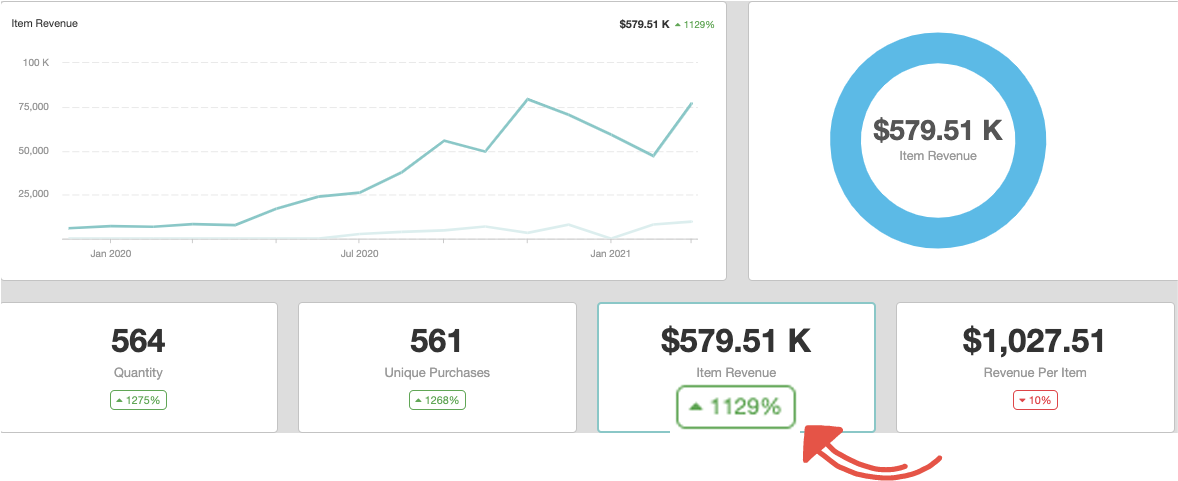
In another example, an online jewellery retailer partnered with us to augment their online sales through improved search engine optimisation. Our data-driven approach focused on enhancing keyword visibility aligned with the specific search intent of their ideal customer demographic. As illustrated in the provided graph, this initiative resulted in a substantial 821.6% year-over-year increase in revenue derived from organic traffic.
image 7 example-keyword-visbility
Want to see more examples of how organic search visibility influences revenue generation, check out our library of SEO case studies.
Ready To Increase Search Engine Visibility?
By implementing the strategies mentioned in this post and tracking the SEO visibility score impact on your target audience, you can significantly increase your search visibility.
As I’ve said before, there’s a slew of online SEO tools available to monitor visibility scores. Use them alongside tracking your site position in Google search results to illuminate the effectiveness of your SEO efforts and guide adjustments to your strategy.
Remember: although high search visibility is a desirable outcome, it doesn’t guarantee the achievement of your overall SEO goals. However, a lack of search visibility presents a significant obstacle to achieving those goals. Therefore, while monitoring visibility is essential, it should be done within the context of your broader business objectives. It’s not easy, but it’s definitely achievable with the right tools, mindset, and team.
Ready to propel your search visibility and cultivate a thriving online presence? The Hawk SEO team possesses the expertise to craft and execute a powerful SEO strategy tailored to your specific situation. Book your free consultation today!
Dealing With a Search Visibility Drop
Have you noticed a decline in your website’s search ranking for keywords relevant to your business goals? This can be frustrating, but there are several potential explanations to explore.
Was There an Algorithm Update?
Search engine algorithms are constantly evolving, and occasional updates can lead to fluctuations in rankings. Tools like SEO trackers can identify recent algorithm shifts, allowing you to pinpoint affected pages for targeted improvement.
Has The Keyword’s Search Intent Shifted?
Over time, the search intent behind certain keywords may change. Analysing the top results for your target keywords will reveal if your content aligns with what users are currently looking for. Is there a mismatch? Consider refreshing your keyword research or creating new content to match the evolving search intent.
Are Your Competitors Outranking You?
The SEO landscape is competitive, and your rivals are likely working on their own SEO strategies – just like you. If their SEO efforts are effective, their rankings may rise while yours fall. Research the pages that now outrank yours and identify any gaps in your own content or SEO approach.
Is Your Content Helpful?
Helpful content is of great importance. Thin content, or pages that don’t truly address user needs within your industry niche, can lead to ranking losses. Investigate Google’s helpful content system and its impact on rankings to ensure your content is informative and valuable for your target audience.
Do You Have a Manual Action Against Our Site?
In severe cases, Google may take manual action against a website, potentially removing it from search results entirely. You’ll typically receive an email to the account associated with your Google Search Console. Check your Search Console for any manual actions and follow the provided steps for resolution. Learn more about manual actions what you can do to properly address them here.




